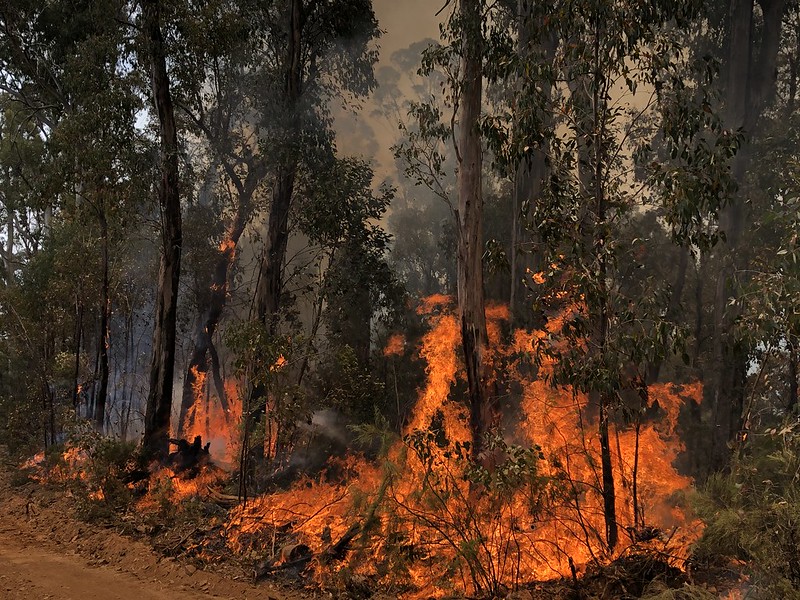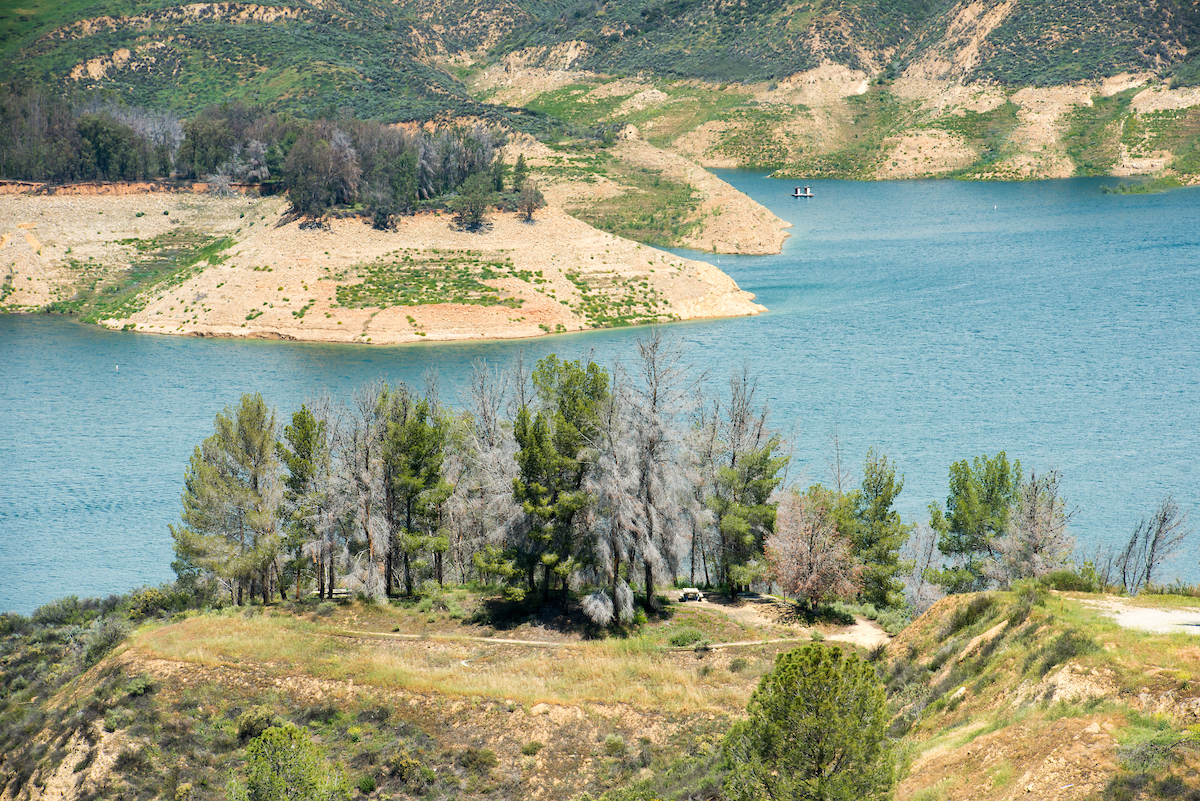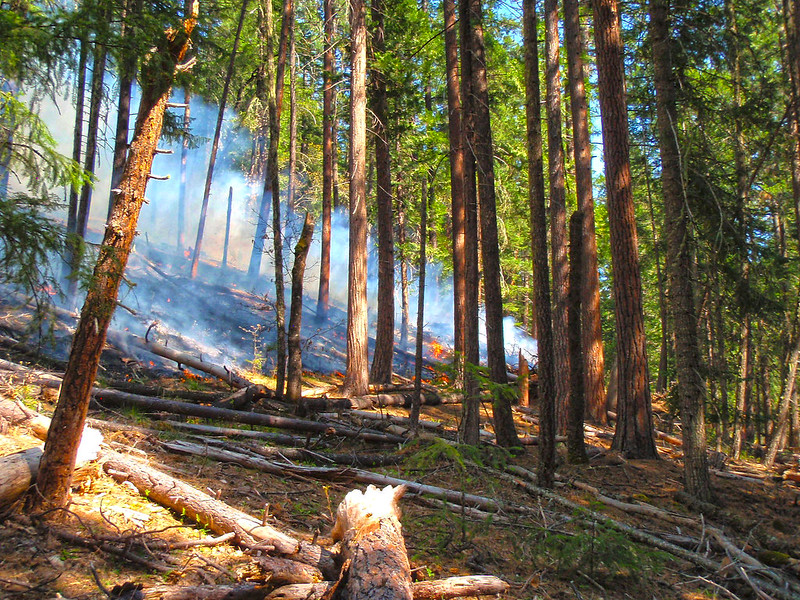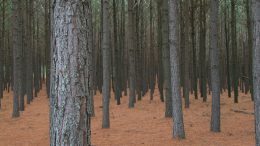Much of the world watched in horror as Australian wildfires that burned late last year and into the beginning of 2020 incinerated an area the size of Wisconsin, killing 33 people and, by some estimates, more than a billion birds, mammals and reptiles.
But the area of forest that burned pales in comparison to the total area affected by drought worldwide, says Tim Brodribb, a professor of plant physiology at the University of Tasmania. That could lead to a larger, though less headline-grabbing, crisis — and one that’s not confined to just Australia.
Brodribb is the lead author of a new study in the journal Science that analyzed 10 years of research on how forests react to droughts, which are becoming more common and severe due to climate change, even though the damage may be less evident to the eye than the Australian bushfires.

“There’s no smoke,” he says, “but there’s a big problem.” In fact, another paper in the same issue of Science found that climate change is driving a decades-long “megadrought” in the U.S. Southwest.
Across the world, forests cover almost a third of all land — and in some places, the ratio is even higher. But if climate change continues unabated, many forests will suffer.
Researchers have used models to understand potential changes to the forest canopy, and “you can easily see 40 to 50% of forests being destroyed in 40 years,” says Brodribb.
The effects could be far-reaching.
Tree species “from rainforests to arid woodlands face similar exposure to stress or damage during periods of drought,” the researchers wrote in their paper.
That would be an astounding change for countless species, as well as humans. Trees provide oxygen and medicine, and they help comprise some of the most diverse ecosystems in the world. Their ability to absorb CO2 is also important, many experts feel, in mitigating the effects of climate change.
“There are already clear signs of accelerated forest mortality, globally,” says Brodribb. “It looks pretty bad.”
Changing Forests
Understanding how forests may respond to climate change is critical, but also complicated.
In laboratory scenarios trees grew faster and larger when there was more CO2 in the atmosphere. That’s led some researchers to wonder if climate change could be good for forests. Faster growth might mean that species can more easily adapt and more quickly spread their young into new areas. More robust trees might help forests survive the other challenges that climate change will bring: more drought, fires, pests and pathogens.
Outside the lab, though, it’s more complicated. For trees, carbon emissions have one big upside, but a lot of downsides.

Brodribb and study coauthor Jennifer Powers, an ecologist at the University of Minnesota, say it’s clear now that the calamity that climate change will bring to forests will offset any positive impact that more carbon dioxide might have.
For one thing, high levels of CO2 might spur more leaf growth, but “if you make 20% more leaves, each plant will actually need more water in a high CO2 world,” Danielle Way, an associate professor of biology at the University of Western Ontario who was not associated with the study, wrote in an email.
In a world with more droughts, that’s a problem for trees.
Water molecules are sticky. They cling to one another and pull each other up the inside of a tree’s trunk through the xylem. As the water evaporates out of the leaves, it draws on the water behind it. Most of the time this process, known as transpiration, provides leaves with the constant supply of water they need for photosynthesis, but it also puts water and xylem under extreme tension.
When there is not enough water, the tension can collapse the xylem, a process known as hydraulic failure. Higher temperatures make this failure even more likely because trees “kind of sweat,” says Brodribb. When there is little water, cells called stomata usually close up to keep a tree’s water from evaporating, but under higher temperatures trees keep the stomata open. Water escapes and the tree draws even more moisture out of the soil.
This is what the authors of the Science study call a “universal vulnerability.” Some species may be better adapted to drought and less susceptible to hydraulic failure, but with a perfect storm of warming temperatures and drier conditions, every tree in every forest in the world could be vulnerable.
California has already seen what this will look like. Warming temperatures, combined with the state’s recent five-year drought, killed nearly 150 million trees in the Sierra Nevada.
“I think that the emerging consensus now is that elevated carbon dioxide levels aren’t going to rescue trees from the negative effects of drought,” says Powers.
But some researchers think it’s too early to draw this conclusion.
“Fundamentally there is this tug-of-war between the benefits of CO2 and the stresses of temperature and drought, and we don’t really know when and where which of those two forces might dominate,” says William Anderegg, an assistant professor of biology at the University of Utah who was not involved in the study. “It could vary by region and by forest and of course by climate future.”
It’s also not simply a matter of whether trees may benefit or be harmed — there are degrees of change in forests that could result.
Lucas Cernusak, a biologist at James Cook University who was not part of the study, wrote in an email that if new trees grow quickly where the older trees die, “the 40% mortality over 40 years could take place without a net change in stem density or canopy cover.”
That means the forests of the future could look a lot different from the forests we know today. They’d be more likely to be dominated by faster-growing, weedier trees that die and more rapidly replace themselves. Even then, droughts, pests and temperatures may push trees to their limits. And any major change in the type of forest would have big implications for the species adapted to live in those habitats. When the trees change, whole forest communities could too.
Planning for the Future
Trees that can’t adapt to these new conditions will need to find some better approximation of the world they evolved to live in, rather than the one people are creating. For trees, that’s a slow process and many species may not be able to migrate fast enough to keep up with climate change. For those that do, more research could identify which species handle drought best and how susceptible they are to hydraulic failure, a useful tool for conservationists helping to rejuvenate a forest.
“We can say, ‘Hey, if you’re going to invest a lot of money in restoring a forest, don’t choose these species. They seem very vulnerable to drought,’” says Powers. “With this knowledge, we can help practitioners choose species that will cope better with future climate change.”

Still, Powers and Brodribb are skeptical of efforts by organizations like Plant for the Planet to plant more trees in order to soak up carbon and curb emissions. It is much better, says Powers, to help support the forests we do have using tools like assisted natural regeneration, in which people can help speed up the natural way a forest grows.
But in order to conserve the forests of the future — whatever they may look like — more research is needed, and fast. There’s still much we don’t know about how individual species will be affected, and what implications that will have for the myriad organisms that depend on the forests. And of course, much of it hinges on how much carbon dioxide we will emit into the atmosphere.
That uncertainty is what concerns Brodribb. Without accurate information to create robust predictions of what forests look like in a changed world, we risk learning the answers firsthand.
“If we’re not predicting this right, if we don’t get it right,” he says, “then the impacts are so unimaginably bad that … it does keep you up at night.”
![]()


